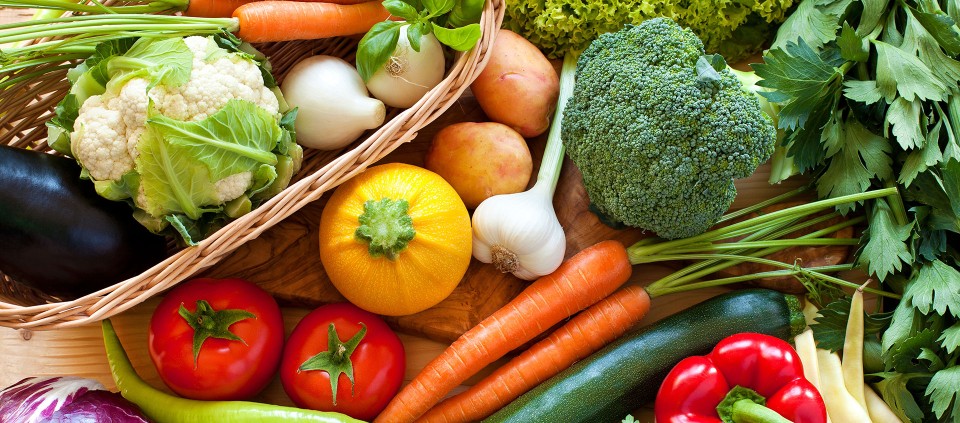Five Ayurvedic Tips for Vegans

Thinking about going vegan? Already committed? You might want to consider applying Ayurvedic principles to your diet to stay healthy and balanced.
“I love Ayurveda because it looks at each individual and says, what does this person need?” says Talya Lutzker, author of The Ayurvedic Vegan Kitchen. “Every individual needs an individual approach to nutrition.” Her cookbook follows conceptual and nutritional principles that closely follow traditional Ayurveda, and is designed to help vegans balance their unique constitutions.
A certified Ayurvedic practitioner and nutrition counselor, Talya spent years studying Ayurveda and searching for whole-food, vegan alternatives to dairy ingredients. She replaces items such as butter, ghee, yogurt, cheese, and milk with equally nourishing vegan alternatives such as coconut oil, avocados, raw tahini, and raw almonds. She hopes her cookbook will make the teachings of Ayurveda more accessible to people who are lactose-intolerant, vegan, or simply wanting to incorporate more plant-based foods into their diet.
If you fall into one of those groups, check out these five Ayurvedic tips for a healthy vegan diet.
1. Determine your Ayurvedic constitution, and choose foods that are good for it.
According to Ayurvedic physician Vasant Lad, the founder of the Ayurvedic Institute in Albuquerque, New Mexico, and a faculty member of the Kripalu School of Ayurveda, each of us has a “particular pattern of energy” that is as unique as our fingerprint. This pattern is formed by a combination of the three subtle energies, or doshas: vata (air and ether), pitta (fire and water), and kapha (water and earth). Everyone typically has some of each dosha in their constitution, but in most of us, one dosha is dominant—resulting in a one-of-a-kind combination of physical, mental, and emotional characteristics that comprises our Ayurvedic constitution. To determine your constitution, take our dosha quiz or get an Ayurvedic consultation from a certified practitioner.
Once you’ve identified your dominant dosha, Ayurvedic cookbooks can teach you how to eat right for your type. India’s traditional healing system teaches that certain foods can balance your constitution, while others can cause imbalances (such as bloating, gas, or congestion). The general rule of thumb is “like increases like.” So if you're a pitta type who’s prone to imbalances that stem from excess heat (such as acne, acid reflux, or inflammation), you don't want to eat hot, spicy foods; they'll make you overheat even more. Instead, incorporate cooling foods like coconuts and cucumbers into your diet. Most Ayurvedic cookbooks are coded according to dosha type, so look for recipes that say they lower your dominant dosha.
2. Figure out if a vegan diet is right for you.
“A vegan diet can be adapted for lots of people,” says Kripalu presenter Hilary Garivaltis, founder of the Kripalu School of Ayurveda. “But if I were to pick a doshic profile that would benefit the most from veganism, it would be kapha.” Ayurveda recommends that kapha types stay away from heavy foods like animal and dairy products, because they generally need to lighten up their bodies as well as their energy. Pittas, with their strong digestive fire, could do well on a vegan diet, too.
But vatas may want to proceed with caution. Because they’re already imbued with the qualities of lightness and dryness, “they generally need more heavy, dense, rich sources of food” to ground and nourish them, Hilary says, “and those sources come so easily from the animal kingdom.” Vatas who aspire to maintain a vegan diet may have to work a little harder to find good sources of fat and protein “that will keep them strong, grounded, stable, moist—all the things that they struggle with,” Hilary says.
3. Eat foods that are as close to nature as possible.
Just because you’re following a vegan diet doesn’t mean it’s healthy, says Hilary. Instead of eating processed, packaged vegan foods (which can contain difficult-to-digest preservatives, excess sugar or salt, and unnatural, concentrated sources of protein such as soy protein isolate), choose foods that are as close to nature as possible. Ayurveda recommends eating food that’s ripened by the sun; it contains the most prana (life force), and as a result, will provide you with the most energy and nourishment. Cooking seasonal, organic, and local food from scratch is best. There are plenty of great sources of protein in the plant kingdom, says Talya, who uses beans and lentils, nuts and seeds, and naturally fermented soy products like tofu and tempeh in many recipes in The Ayurvedic Vegan Kitchen.
4. Eat a variety of foods.
Are you trying to get enough iron by gorging on greens? Or enough protein by eating nuts and seeds at every meal? “Sometimes the danger of transitioning to a vegan diet is that you may overeat certain food items,” says Hilary. “But from an Ayurvedic perspective, overeating even a ‘healthy’ type of food can cause imbalance.” Eat a variety of foods—and eat them all in moderation.
5. Observe how food affects you.
An essential aspect of any Ayurvedic lifestyle is self-inquiry. “Listen to your body,” Hilary says. “Pay attention to how you feel after you eat different types of food.” Which foods make you feel healthy, vibrant, and strong? Which make you feel undernourished or bloated? Like the ancient yogis, use your body as a laboratory and conduct your own experiments. There’s a chance you might feel too hungry or too spacey on a vegan diet—and if so, that’s okay. Your body type might require you to eat some dairy or even meat to stay balanced. But if your skin clears up, your digestion improves, and you feel strong and balanced, a vegan diet may be right for you.
Vegan Mango Lassi
(reprinted with permission from The Ayurvedic Vegan Kitchen, by Talya Lutzker)
Preparation Time: 5 minutes
Yield: 1 serving
Coconut milk replaces creamy yogurt, and low-glycemic coconut sugar lends a nutritious source of sweetness to this traditional, tremendously healing Indian beverage.
¾ cup coconut milk
1 cup oat milk or almond milk (ideally, made fresh)
1 cup fresh mango chunks
2 tablespoons freshly squeezed lemon juice (about 1 lemon)
2 tablespoons coconut sugar
Pinch ground cinnamon
Put the coconut milk, oat or almond milk, mango, lemon juice, coconut sugar, and cinnamon in a blender. Process until smooth, stopping occasionally to scrape down the blender jar. Sweeten with additional coconut sugar to taste.
